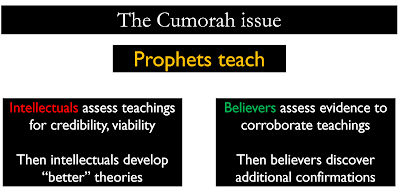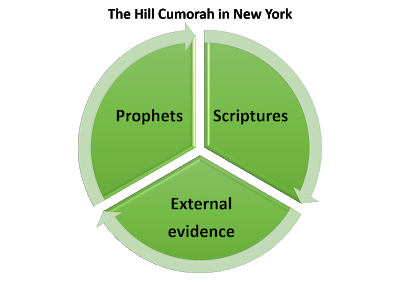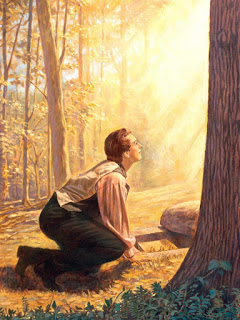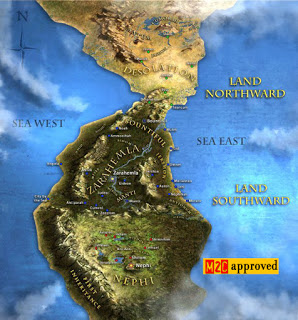 |
| William of Ockham |
The simplest explanation is usually the best, a principle often described as Occam’s razor. “Among competing hypotheses, the one with the fewest assumptions should be selected.”
On the topic of Book of Mormon geography, which setting requires the fewest assumptions?
Which explanation is the simplest?
The North American setting has one assumption.
1. Joseph Smith and Oliver Cowdery knew that the Hill Cumorah in New York was the place where the Nephite and Jaredite civilizations were destroyed. Everything directly attributable to them is consistent with that setting. Contrary ideas are not directly attributable to them; therefore, these contrary ideas were produced by other people who didn’t know what Joseph and Oliver knew.
The Mesoamerican setting relies on a series of assumptions:
1. Joseph Smith didn’t know where the Book of Mormon events took place.
2. Oliver Cowdery (or another unknown person) at some unspecified date started a folk tradition that Cumorah was in New York, based on an incorrect assumption.
3. Joseph misled his wife Emma when he wrote to her about crossing the plains of the Nephites after he’d crossed Ohio, Indiana, and Illinois.
4. Oliver memorialized the incorrect folk tradition in Letter VII in 1835.
5. Joseph, for unexplained reasons, passively adopted Oliver’s speculation and had it widely published.
6. Joseph, who wrote very little himself, nevertheless wrote a series of articles in the Times and Seasons about Central America that he left anonymous for unknown reasons.
7. David Whitmer, late in life, conflated his own specific memory of the first time he heard the word “Cumorah” with Oliver’s folk tradition.
8. Etc.
Which set of assumptions makes the most sense to you?
____________________________
Here are some relevant quotations about simplicity.
“If you can’t explain it to a six year old, you don’t understand it yourself.”
― Albert Einstein
To which Groucho Marx replied:
“A child of five could understand this. Send someone to fetch a child of five.”
― Groucho Marx
“Truth is ever to be found in the simplicity, and not in the multiplicity and confusion of things.”
― Isaac Newton
“Why did they believe? Because they saw miracles. Things one man took as chance, a man of faith took as a sign. A loved one recovering from disease, a fortunate business deal, a chance meeting with a long lost friend. It wasn’t the grand doctrines or the sweeping ideals that seemed to make believers out of men. It was the simple magic in the world around them.”
― Brandon Sanderson, The Hero of Ages
“People who pride themselves on their “complexity” and deride others for being “simplistic” should realize that the truth is often not very complicated. What gets complex is evading the truth.”
― Thomas Sowell, Barbarians inside the Gates and Other Controversial Essays
“..things are never as complicated as they seem. It is only our arrogance that prompts us to find unnecessarily complicated answers to simple problems.”
― Muhammad Yunus, Banker to the Poor: Micro-Lending and the Battle Against World Poverty
“I am not a genius, I am just curious. I ask many questions. and when the answer is simple, then God is answering.”
― Albert Einstein







































